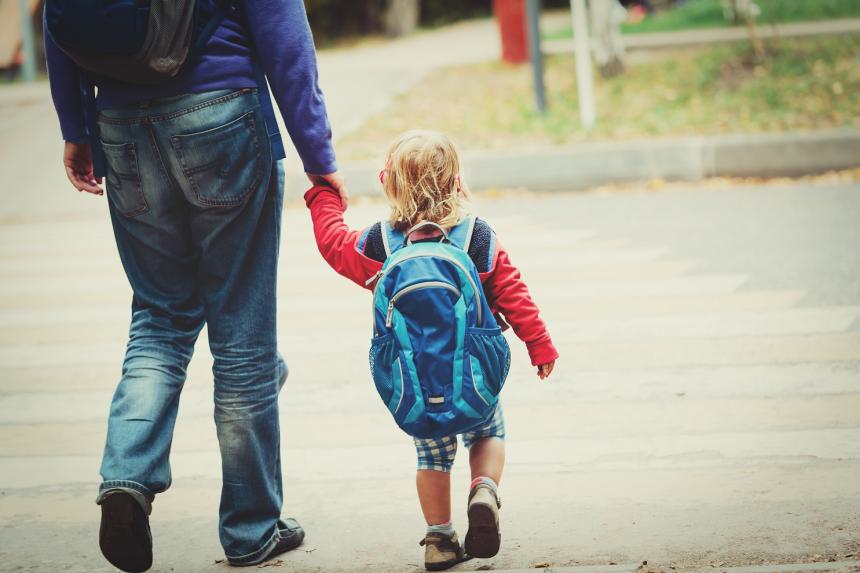
The power of effective transitions
From the first experience of early childhood education and care all the way up to secondary school, education is full of transition points. Transitions are the risky points in education: a poor transition can disrupt the continuity of children’s learning.
The transition from early childhood education to formal schooling is a monumental step in a child's life. Transitions also occur between rooms in an early childhood service, and in the multiple pathways between services and schools. Some children also transition between family day care and preschool or long day care services over the course of a week.
The assistance children are offered as they move through these transitions can be inconsistent and ineffective.
From a child’s perspective, they move from early childhood education and care (if they have accessed it) into formal schooling, and what’s being taught, what’s being measured, what’s being valued all changes. It changes again when they move from primary into secondary schooling.
Ideally, we would offer all children the foundational tools to progress seamlessly through their education and maintain their continuity of learning, no matter what their starting point and the relative advantages they bring to their education experience.
In practice, rather than seeing children with educational disadvantage consolidate their learning, and catch-up with higher performing peers, the equity gap widens with every year they are in school. Unwittingly, we have designed a system that bakes in inequity.
As ever, wherever there is a weakness or shortcoming in a system, its impact is greatest on those who are already vulnerable or disadvantaged.
So what can be done to create more effective transitions from birth to Year 12, to support greater continuity of learning and better student outcomes?
Joining the dots between early childhood and school
Early childhood and school sectors exist within different regulatory and policy frameworks, and are often underpinned by different philosophical viewpoints.
Yet the synergies between the 2 are firmly recognised. The Australian Curriculum recognises that the Early Years Learning Framework V2 establishes the foundations for effective learning in school and throughout life. Early Childhood Australia and ACARA jointly wrote about how the Australian Curriculum builds on the EYLF through:
- respecting the nature of learners at particular stages of their learning lives
- recognising that there is a set of foundational dispositions, knowledge and skills that underpin future learning success
- acknowledging the diversity of starting points that learners bring to next-stage learning
- encouraging teachers to connect pedagogical practices in the first years of school to those used in early childhood education and care contexts.
Understanding how brains learn throughout childhood
At AERO, one way that we are bringing evidence to the task of helping educators understand how to improve continuity of learning is by using what the science says about how brains learn to inform curriculum and pedagogy. This means understanding not only what works for improving learning, but also why it works in terms of the cognitive processes that enable learning to occur.
During the first 5 years of life, children develop the cognitive architecture that will support their learning throughout their school years and beyond. More than one million neural connections form every second in young children’s brains.
As the brain develops, children acquire and strengthen the cognitive abilities that they will use in later learning, including seeing, hearing, using memory and higher-order thinking.
The brain changes rapidly throughout childhood and adolescence, as does the type of learning that's occurring. Learning moves from being mainly about gaining biologically primary knowledge and skills (like walking and speaking) in the early years, to being about biologically secondary knowledge and skills (like reading and writing and making calculations).
Teaching practices that are informed by an understanding of how brains learn are more effective in making sure that new knowledge is retained.
AERO's research into transitions
AERO's research into transitions notes that effective transitions to school involve children feeling a sense of belonging in their new school community. Transition is a social process, unique to each child and their family, involving many stakeholders and extending over time. Developing a sense of belonging at school depends on the experiences and actions of the child, their family, and the support that they receive from their teachers and educators in early childhood education and care, teachers at school, their peers and the wider community.
The purpose of that successful transition is maintaining continuity of learning for the child, both through the transition and into their future. A sense of belonging can support learning, wellbeing and engagement over a child’s entire time at school. Students who feel engaged in school achieve better outcomes and stay at school for longer. Those who are disengaged at the beginning of their schooling risk falling into cycles of low achievement and further disengagement.
Internationally, bodies like the OECD, and locally, works by Dockett and Perry, underscore the importance of collaborative transitions.
Conclusion
Effective transition can’t just be about changing physical spaces, but fostering an environment that ensures each child thrives.
There are strong examples of innovation and success in approaches to transition to school – for example, Transition: A Positive Start to School, a Victorian Government initiative that supports effective school transitions and continuity of learning. But we must acknowledge that we do not consistently, systematically get this transition right.
Measuring the quality of our transition practices involves celebrating our successes and acknowledging our gaps. The key isn't always to add more tasks, but to amplify the impactful practices already in place.
We have strong evidence about what works best to support children and young people’s learning. It’s time to bring a greater sense of urgency to the task of embedding an evidence-based approach systematically.
This article is based on excerpts from Dr Donovan’s speech at the 2023 ACER Research Conference.